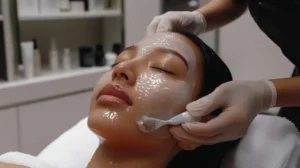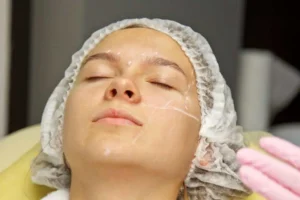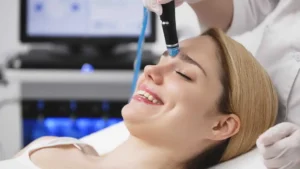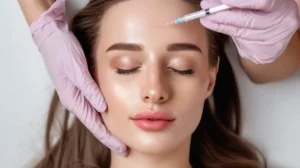If you’ve ever looked at your skin and thought, “I need a little pick-me-up,” then you should know that chemical peels are an effective way to get that. Chemical peels remove dead skin cells, leaving behind a new layer of skin. This can help reduce signs of aging on the face, neck, and chest while improving skin texture and tone.
While there are several types of chemical peels (some more aggressive than others), they all share the same goal: to improve the appearance of your skin without causing significant damage or pain.
Proper Care After Chemical Peel
Chemical peels are a great way to get rid of the signs of aging, but they aren’t exactly a walk in the park. The skin around your mouth can become dry and irritated after a peel, but you can minimize the effects by following these tips:
Schedule Your Recovery Time
After your chemical peel, it’s essential to follow your doctor’s instructions and ensure that you don’t do anything that disrupts the healing process. You will probably be able to return to work immediately after the procedure, but if you have sensitive skin or are prone to breakouts, you may want to take a day off work just in case.
Your skin may be sensitive for up to a week after undergoing a chemical peel and could irritate if exposed to harsh chemicals or products like sunscreen or makeup.
Hydrate
After your peel, you should drink plenty of water. Your skin will be extra sensitive and dry, so you should drink at least eight glasses of water daily. You also want to hydrate properly by drinking electrolyte-rich beverages like Gatorade or Powerade. Drink more if you exercise or get sick (dehydration can lead to headaches).
Protect Your Skin from Sun Exposure
You should protect your skin from the sun because it can make your face and neck more sensitive to UV rays. Use sunscreen with SPF 30 or higher daily, even on cloudy days. Wear a hat with a brim that shades your face and sunglasses when outside.
Some people may be able to go out in the sun during the morning and evening hours when they are not as strong. Stay out of peak sunlight hours (10 am to 4 pm) and wear clothing that covers most of your body outdoors.
Eat Cleanly
As you’re recovering from your chemical peel, it’s essential to eat healthily and avoid foods that will cause you to break out more. This means avoiding sugar, alcohol, and smoking. Avoiding drugs is also recommended, as they can worsen your skin’s condition.
Sugar can cause inflammation in the body and can even lead to a breakout of acne or dry patches on your face if consumed excessively. Alcohol dehydrates the skin, so it’s best to avoid drinking alcohol while having a chemical peel done because it would make the drying process worse than without it.
Cool Your Skin
It’s a good idea to take care of your face immediately after a chemical peel, as it will be pretty sensitive. Use cool compresses or ice packs for 15 minutes as you heal. You can also apply cold water to your face (avoid hot showers and baths) to help soothe it and reduce redness.
Stay Relaxed
The best thing you can do to help reduce redness and irritation is to relax your physical and mental muscles. The first step is to remain calm when handling the peel so it doesn’t get smeared on your face or in your eyes. Try deep breathing exercises or relaxation techniques like meditation, which can be extremely helpful when reducing stress levels.
And while we’re talking about stress: if you’re feeling anxious about how you look after a chemical peel (and let’s be honest here—you probably will), take time out of your day for some self-care activities that help bring down those anxiety levels and keep them low until the peeling phase passes!
- Don’t stress how you look for a week after a chemical peel and focus on taking care of yourself.
- Don’t worry about how you look for a week or two after a chemical peel.
- Focus on taking care of yourself.
- Try to relax and take it easy for the first few days after your treatment, especially if the peel was done in a doctor’s office. You may feel some burning and stinging, but these sensations should subside quickly once the anesthesia wears off.
If they don’t go away quite as fast as you’d like, ask for pain medication and an antihistamine like Benadryl (diphenhydramine).
- Don’t stress—you have plenty of time before your next appointment.
Benefits of Chemical Peels
Chemical Peels can Improve Skin Appearance
Chemical peels can help smooth out fine lines and wrinkles, reducing the appearance of acne scars, sun damage, and scarring.
Acne is caused by a buildup of oil in your pores, leading to inflammation and irritation. A chemical peel may help clear breakouts by removing dead skin cells that clog pores and cause pimples.
The New Skin is Smoother and Less Wrinkled than the Old Skin
When you have a chemical peel, your dermatologist will remove only a skinny layer of dead cells from your face. This results in brand-new, healthier skin that looks better. It’s not just that you’re removing the top layer of dead cells; you’re also stimulating growth beneath it by exposing your body to higher concentrations of vitamin C or other active ingredients.
The result is younger-looking, healthier skin without spending hours under the sun—which can cause premature aging or even cancer!
Conclusion
Remember, if you take the time to treat yourself and give your skin some TLC, why not do it right? And remember: the way you look is not what matters most. How you feel inside is worth so much more than how your face looks outside.
Ella Medical Aesthetics is the place to go for chemical peel services. Our staff is happy to advise you on which type of peel is best for your skin and help you decide what level of treatment will be right for you. Chemical peels can treat everything from acne to wrinkles, so it’s essential to ensure you’re getting the right one for your needs.








